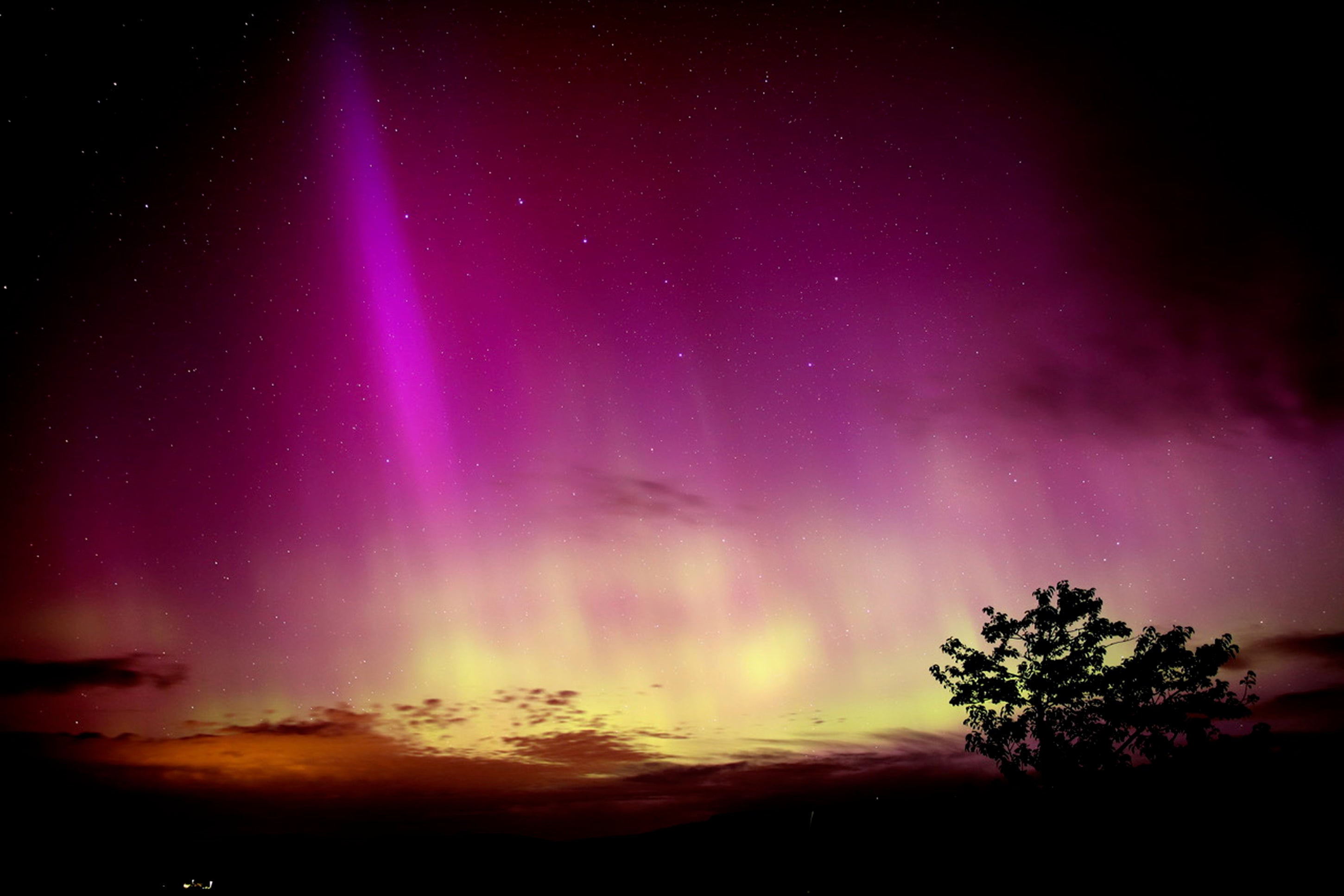Northern Lights: The places in the UK with the best chance of seeing aurora borealis
The UK is likely to see the phenomenon again this year
Your support helps us to tell the story
From reproductive rights to climate change to Big Tech, The Independent is on the ground when the story is developing. Whether it's investigating the financials of Elon Musk's pro-Trump PAC or producing our latest documentary, 'The A Word', which shines a light on the American women fighting for reproductive rights, we know how important it is to parse out the facts from the messaging.
At such a critical moment in US history, we need reporters on the ground. Your donation allows us to keep sending journalists to speak to both sides of the story.
The Independent is trusted by Americans across the entire political spectrum. And unlike many other quality news outlets, we choose not to lock Americans out of our reporting and analysis with paywalls. We believe quality journalism should be available to everyone, paid for by those who can afford it.
Your support makes all the difference.Many across the UK and Ireland were treated to a stunning show of the Northern Lights over the weekend - with more to come.
According to experts, the sun has now entered its period of greatest activity, which means Brits could be seeing more colourful displays of the aurora borealis until the middle of next year. The current peak is expected to until mid-2025, according to the Royal Astronomical Society.
Our home star typically follows an 11-year-cycle, with periods of intense activity followed by a quiet phase.
During its active bursts, also known as solar maximum, the sun releases charged particles that travel through space at speeds of around one million miles per hour.
Some of the particles are captured by the Earth’s magnetic field and collide with oxygen and nitrogen atoms and molecules in the atmosphere.
These atoms and molecules then shed the energy they gained from the collision, emitting light at various wavelengths to create colourful displays in the night sky.

According to Nasa, oxygen emits either a greenish-yellow light – which is the most familiar colour of the aurora – or a red light, while nitrogen generally gives off a blue light.
The oxygen and nitrogen molecules also emit ultraviolet light, which can only be detected by special cameras on satellites.
Photos of the dazzling natural phenomenon were captured across England, Scotland and Ireland on Thursday night and could be seen as far south as Kent and East Anglia.
Best places to see the Northern Lights
Major cities are regularly bathed in bright lights, but neon displays streaking the UK and Ireland’s skies last night were (almost) out of this world.
Supernatural shows above even the busiest, built-up regions were a result of a strong solar storm hitting a scale of eight on the KP index, creating some of the most powerful northern lights displays of the year.
“We’re firmly within solar maximum which as the name suggests, is when the Sun is at its most active during its 11-year solar cycle,” explains astronomer and astrophotographer Matt Robinson from The Aurora Zone, an operator typically selling northern lights holidays in the Nordics.
“During solar maximum, the sun releases a higher frequency of solar flares which launch out dense eruptions of charged solar particles into space. The stronger the storm, the further south in the northern hemisphere the aurora borealis is visible. This is why the northern lights have been spotted multiple times in the UK within the last 12 months, and this should continue into 2025.”
So, for those who missed last night’s extravaganza, there’s still time to plan a trip for the months ahead. Here are the best places to go…
Cairngorms National Park, Scotland

“The incredibly dark skies of the Cairngorms – largely free from the polluting glow of street and security lights – means it’s one of the few places in the UK where with just your eyes, you can witness some amazing treats,” says astronomer Paul Haworth.
Tomintoul & Glenlivet, which has been awarded International Dark Sky status, is one of the best spots.
How: To plan a trip, go to visitcairngorms.com.
Outer Hebrides, Scotland

A lack of light pollution makes it possible to see the Mirrie Dancers in action above islands like North Uist and Lewis if weather permits. But that’s not all; the Orion Nebula, Milky Way and the Andromeda galaxy can all be spotted with the naked eye. As winter draws in, days shrink giving more opportunities to study our universe. For expert tips, head to the Hebridean Dark Skies Festival on Lewis and Harris in February (dates tbc), featuring stargazing talks alongside theatre, live music and visual art performances.
How: To plan a trip, go to visitouterhebrides.co.uk.
Ullapool, Ross-shire, Scotland

This former fishing village in a remote corner of the Western Highlands is a superb setting for northern lights photography. Snow-dusted peaks surround the area, sloping into red and ochre moorlands and a glittering blue sea. Little light pollution allows stars to shine brightly, while bars and restaurants open year-round provide plenty of places to warm up.
How: A two-night half-board stay at the Dipping Lugger – a luxurious, Michelin-mentioned restaurant with rooms – costs from £1,040 for two adults. Visit thedippinglugger.co.uk.
County Antrim, Northern Ireland

Witnessing the northern lights is memorable – but seeing it light up the ruins of a medieval castle is unforgettable. Photographers frequently flock to Dunluce Castle on the Antrim Coast, where displays have been impressive in the past couple of years. Visit Facebook group North Coast Aurora Watch for updates on when the lights will be at the peak.
How: Stay at The Marine Hotel in Ballycastle, a 30-minute drive away. Doubles from £95 with breakfast. Visit marinehotelballycastle.com.
